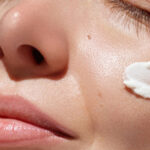
How to Exfoliate Without Compromising the Microbiome
The skin’s microbiome has become a hot topic in the skincare industry, and for good reason. This complex ecosystem of bacteria, fungi, and viruses plays a vital role in skin health—regulating inflammation, protecting against pathogens, and supporting the skin barrier. But while exfoliation is a cornerstone of professional skincare, it can easily disrupt the microbiome if not performed thoughtfully.
Historically, exfoliation was about sloughing off dead skin to reveal a fresh layer underneath. The more aggressive the treatment, the more effective it was perceived to be. Today, however, estheticians understand that exfoliation must be strategic, not excessive. The outermost layer of the epidermis—the stratum corneum—houses not only corneocytes and lipids but also a host of beneficial microorganisms. Over-exfoliating this layer can compromise the skin’s immunity and lead to issues like increased sensitivity, breakouts, dermatitis, and even fungal infections.
The link between the microbiome and the acid mantle is especially significant. When we exfoliate with acids or scrubs, we temporarily lower the skin’s pH. While this can be beneficial for short-term desquamation, repeated disruption without proper recovery time may destabilize the environment in which the microbiome thrives. This is particularly problematic for clients already dealing with barrier disorders or inflammatory skin conditions.
Gentle alternatives are emerging to help estheticians respect the microbiome while still encouraging healthy turnover. Polyhydroxy acids (PHAs), like gluconolactone, offer large molecular structures that exfoliate superficially while also providing antioxidant and humectant benefits. Enzyme exfoliants derived from papaya, pineapple, or pumpkin work by digesting only the dead protein cells, leaving living tissue and microbiota intact. Even fermented ingredients, such as lactobacillus ferment lysate, show promise for refining skin texture without disturbing microbial balance.
Post-exfoliation recovery is just as important. Incorporating prebiotics and postbiotics into treatments helps replenish the skin’s microflora. Beta-glucan, panthenol, calendula, and colloidal oat are excellent additions to calm inflammation and support recovery. Hydration is also crucial, as a well-hydrated barrier supports a thriving microbiome.
Estheticians must also educate clients on at-home exfoliation. Clients often overuse exfoliating acids in search of quick results. Encouraging them to focus on barrier repair and microbiome-supporting products, especially in between professional treatments, will ultimately lead to healthier, more resilient skin.
The future of exfoliation is rooted in balance. By honoring the skin’s natural systems, including the microbiome, estheticians can offer results-driven care that supports and not suppresses the skin’s innate intelligence.












